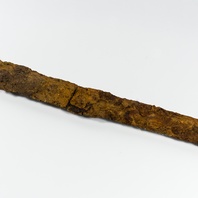
Viking Objects
Sword (1989-59/7113)
This Viking Age sword was found in Grave 511 at Repton where the invading Viking Great Army had their winter camp in 873/4. When it was found, the sword had traces of a wooden scabbard attached to the rusted blade. Analysis showed that the scabbard was lined with fleece and covered in leather. The grip was wooden and covered in a woollen textile.
Read More
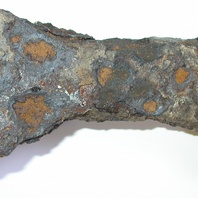
Viking Objects
Iron Axe-head (1989-58/3296)
Axes were not only a common implement used for a variety of wood based activities, such as constructing ships, but also were often used as weapons. Axes came in a variety of shapes and sizes depending on their function. This one was made to be a weapon and would have been wielded with a single hand. It was found at Repton in Derbyshire where there was a Viking camp which was recorded in the Anglo-Saxon Chronicle under the year 873/4.
Read More
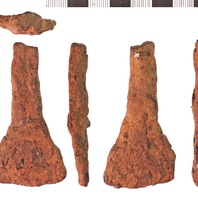
Viking Objects
Chisel (NLM-79460E)
This chisel fragment has a wrought-iron V-shaped blade and likely had a socket for attachment to a handle. Socket attachment using sockets made of rolled metal are characteristic of early medieval metal-working.
Read More
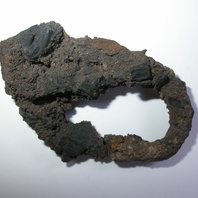
Viking Objects
Iron Buckle (1985/225-3)
An iron buckle from Mound 1 at Heath Wood, Ingleby. The pin of the buckle is bent to one side. This was part of a grave assemblage that include fragments of a sword and other belt fittings.
Read More
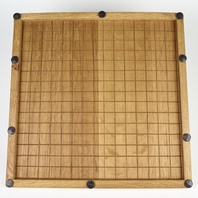
Viking Objects
Reproduction Game Board
A reproduction oak game board based on one from Coppergate, York. This is a larger-than-usual hnefatafl board with no significant squares marked out. Gaming pieces have been laid out on it in some of the photographs, but it is likely that a board this size would require more pieces on the outer edges (the attackers).
Read More
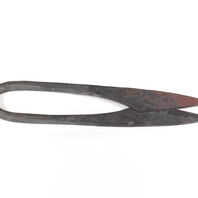
Viking Objects
Reproduction Shears
Shears were a common agricultural implement generally used to cut the wool off sheep but could also have been used as scissors in textile production. These are based on a number of originals uncovered during the excavations at Flixborough, Lincolnshire.
Read More
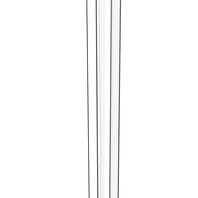
Viking Designs
Drawing of a Viking Sword
This is a drawing of a Viking Age sword which was found in Grave 511 at Repton where the invading Viking Great Army had their winter camp in 873/4. When it was found, the sword had traces of a wooden scabbard attached to the rusted blade. Analysis showed that the scabbard was lined with fleece and covered in leather. The grip was wooden and covered in a woollen textile.
Read More
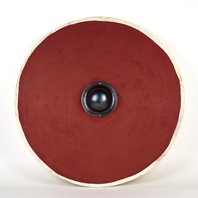
Viking Objects
Reproduction Shield
A reproduction shield based on examples from Gokstad and Trelleborg. The face is covered with linen, based on traces of linen found on the reverse of a shield boss at Cumwhitton, Cumbria. The rim was covered in wet, stretched rawhide which was allowed to shrink and dry in place. The iron, carinated boss is a type that is common on Viking Age sites in England and Scandinavia
Read More
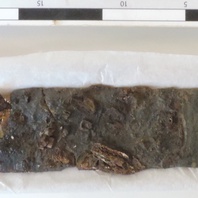
Viking Objects
Sword Blade (1987/590-2)
This fragment of a sword blade was found at the Viking cemetery at Heath Wood, Ingleby in Mound 1. It is incomplete and consists of a 385mm long section of the blade with a rounded tip. the blade has a fuller down the middle to reduce weight. The sword would probably have been over 900mm long when complete, so less than half the blade survives.
Read More
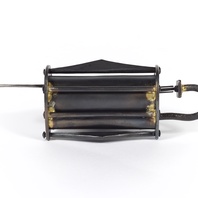
Viking Objects
Reproduction Iron Padlock
Complex metal locks such as this one would have been expensive to manufacture and thus were, generally, used to protect one’s most valuable possessions.
